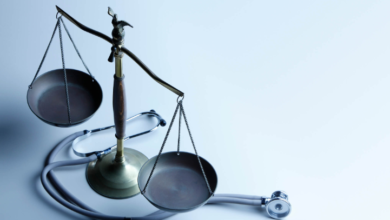True-Crime Series About a Physician Who Commits Gross Malpractice

Imagine trusting a physician with your life, only to discover that their hands are not as skilled as you had believed. This chilling premise is the backbone of a riveting true-crime series about a physician who commits gross malpractice. The protagonist, Dr. James Smith, presents an alluring façade of professionalism and expertise but hides a dark history beneath his white coat. As the episodes unfold, viewers are drawn into a web of deception, betrayal, and devastating consequences for those who place their faith in him.
Each story draws us deeper into the world of medical ethics gone wrong—a journey filled with heart-wrenching moments and shocking revelations. Join us as we delve into this gripping narrative that explores not just one man’s fall from grace but also raises critical questions about accountability within the healthcare system. This isn’t just another crime show; it’s an eye-opening examination of trust shattered in what should be one of society’s most trusted professions.
The first case: A botched surgery leads to the death of a patient
Dr. James Smith’s career began with promise, but it quickly turned dark. The first case that sent shockwaves through the medical community involved a routine surgical procedure gone horribly wrong.
A 45-year-old patient arrived at the hospital for what should have been a straightforward appendectomy. Family members waited nervously in the waiting room, optimistic about their loved one’s recovery. But within hours, everything changed.
Post-surgery complications arose unexpectedly. Dr. Smith claimed it was just a slight setback, but alarms were ringing behind closed doors. Days later, the patient succumbed to severe internal bleeding—a direct result of negligence during surgery.
The family was devastated and sought answers as they faced unbearable grief. Investigations revealed inconsistencies in Dr. Smith’s reports and questions about his decisions during surgery lingered like an ominous cloud over the hospital corridors where trust had once thrived.
Uncovering Dr. Smith’s history of malpractice and cover-ups
As the investigation unfolds, Dr. James Smith’s past begins to unravel like a tightly woven tapestry with fraying threads. Whispers of suspicion grow louder, revealing a trail of malpractice complaints and hidden settlements.
Former patients come forward, sharing harrowing tales of surgeries gone wrong. Some claim they were never informed about the risks involved in their procedures. Others describe feeling dismissed during follow-up consultations as if their concerns didn’t matter.
Documents surface showing repeated disciplinary actions that were swept under the rug. Hospital administrators choose silence over accountability, prioritizing reputation over patient safety.
The more digging journalists do, the murkier it becomes. It’s clear this is not an isolated incident but part of a larger pattern that raises critical questions about oversight and ethics in medicine today. The shadows around Dr. Smith deepen as each revelation shakes public trust further still.
The impact on the victims and their families
The impact of Dr. James Smith’s actions rippled through countless lives. Families were shattered, grappling with grief and anger after losing loved ones due to preventable mistakes.
Victims’ families often felt helpless in the face of a trusted physician’s betrayal. Each case unfolded like a tragic story, leaving behind broken dreams and unanswered questions.
Support groups emerged, uniting those affected by similar experiences. They shared their pain and sought solace in one another’s company, navigating a common thread of loss.
Children lost parents, spouses were left alone to cope with unimaginable sorrow. The emotional toll was profound; many reported ongoing struggles with anxiety and depression stemming from these traumatic events.
For some families, seeking justice became their only pathway toward healing. Yet even as they pursued accountability for Dr. Smith’s malpractice, the scars remained—a constant reminder of what could have been if trust had not been so tragically misplaced.
The legal consequences for Dr. Smith and his team
Dr. James Smith’s actions did not go unpunished. After the shocking revelations of his malpractice, a wave of legal repercussions followed.
Victims and their families rallied together to file lawsuits against him and his team. The courts were flooded with claims, each one detailing negligence that led to devastating outcomes.
Criminal charges were also brought forth, adding another layer to the unfolding drama. Prosecutors sought justice for those who had suffered under Dr. Smith’s care.
As investigations deepened, it became evident that multiple medical professionals within his practice turned a blind eye to the alarming signs over the years. Their complicity opened doors for additional charges against them as well.
The courtroom scenes grew tense as testimonies revealed harrowing details about failed procedures and cover-ups. It was clear no one would escape scrutiny in this tragic saga of betrayal within healthcare systems.
The public outrage and media frenzy surrounding the cases
The unfolding saga of Dr. James Smith ignited a firestorm of public outrage. As details emerged about his shocking malpractice, people were left reeling. How could someone sworn to heal cause such harm?
News outlets quickly picked up the story, creating a frenzy that captivated audiences nationwide. Headlines blared with phrases like “medical monster” and “betrayal in scrubs.” The shock value drew viewers, but it also sparked deeper conversations about trust in healthcare.
Social media platforms buzzed with anger and disbelief. Victims’ families shared their heart-wrenching stories online, rallying support from communities across the country. Hashtags proliferated as calls for accountability gained momentum.
As investigative reports aired nightly, the nation watched closely. Each revelation painted a darker picture of negligence and deception within a system meant to protect patients’ lives—a reality too many struggled to accept or understand fully.
The aftermath and lessons learned
The aftermath of Dr. James Smith’s malpractice cases rippled through the medical community and beyond. Trust was shattered, leaving many patients hesitant to seek care from their physicians.
Medical boards implemented stricter oversight measures, aiming to prevent similar tragedies. The series sparked discussions about transparency within healthcare systems, emphasizing that accountability should be paramount.
Families impacted by Dr. Smith’s actions joined forces, advocating for reforms in patient safety regulations. Their voices became a powerful reminder of the human cost behind every medical decision.
Educational programs emerged focusing on ethics and communication in medicine. These efforts aimed to create a culture where patient welfare is prioritized over ego or negligence.
As society grapples with these lessons, it becomes evident that protecting patients must remain at the forefront of healthcare practices. The need for vigilance and continuous improvement is more critical than ever as we navigate this complex landscape.
Reflections from medical professionals on preventing
The shocking narrative of Dr. James Smith has sent ripples through the medical community. His actions raise critical questions about accountability and transparency in healthcare. Medical professionals are reflecting on this troubling case, emphasizing the need for improved oversight to prevent similar tragedies.
Many experts advocate for more rigorous training programs focusing on ethics and patient care. They highlight that ongoing education can help physicians recognize the gravity of their responsibilities. Open discussions about malpractice must become part of medical culture.
Collaboration among healthcare providers is also essential. By fostering a united front, practitioners can support one another and share insights into best practices, ultimately prioritizing patient safety above all else.
Additionally, creating robust reporting systems for malpractice will encourage whistleblowing without fear of retaliation. When doctors feel safe to voice concerns about unethical behaviors, it fosters an environment where patient welfare comes first.
The journey towards healing begins with acknowledging past mistakes and committing to change. Only then can we hope to protect patients from those who betray their trust in such devastating ways.



